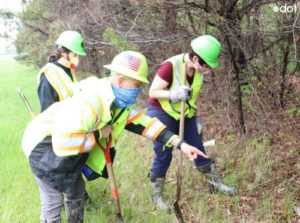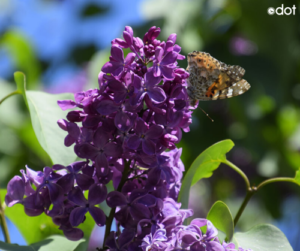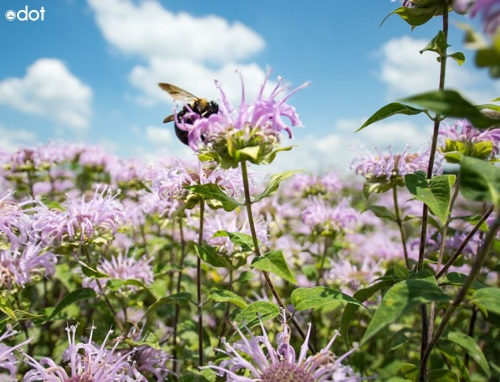Relocating a drove of rare plants from an environmentally sensitive transportation construction site is a meticulous operation – and often state departments of transportation are running the show.
[Photos courtesy of Ohio DOT]
Take Ohio, for example, home to 400 species of rare plants accompanied by a spate of state laws designed to protect rare, endangered species at certain hotspots, like one in the Oak Openings Region of Toledo – an area known for its sandy soil, where only certain varieties of rare plant life thrive.
So when transportation construction beckons in such locations, biologists within the Ohio Department of Transportation suit up for action.
“The Ohio Department of Natural Resources (ODNR) tells us where to move the rare species,” said Matt Raymond, ecological program manager for the Ohio DOT, who stressed that the federal National Environmental Policy Act as well as state laws help guide such plant relocation endeavors.
The agency started the relocation at the Oak Openings site by excavating the plants, which included Bowles’ golden sedge (Carex aurea), Baltic Rush (Juncus balticus), hairy pinweed (Lechea villosa), Scaly blazing star (Liatris squarrosa), prairie thimbleweed (Anemone cylindrica) and wild lupine (Lupinus perennis).
“We moved them to a park that’s located several miles from of the excavation and then helped get them planted,” Raymond said.
Given the delicacy of such operations, he explained that intermittent follow-up on the progress of the plants in their new home occurs at various intervals.

“Just how many plants are moved depends on what’s growing on the site,” Raymond noted. For instance, he pointed to the 2014 Portsmouth Bypass project, a 16-mile, four-lane highway that built to connect U.S. 52 near Wheelersburg to U.S. 23, just north of Lucasville. That job called for the removal of 150 Southern Monkshood (Aconitum uncinatum) and 800 Primrose-leaved Violet (Viola primulifolia) to nature preserves.
“So we moved 950 endangered plants,” said Raymond. “We sent our biologists to oversee the excavation, because the crew needed direction as to what to look for and where to dig. We also received help from ODNR employees of the preserves that receive the plants, too.”
Lastly, Raymond offered the example from 2012, where ODOT relocated the threatened Drummond’s aster (Symphyotrichum drummondii) from the construction limits of a federally sponsored bike/towpath project along the historic Ohio and Erie Canal, in Stark and Tuscarawas counties. During the ecological survey, the agency’s team also documented in detail about 500 of the plants living throughout the project area before relocating them elsewhere along the towpath site.
Relocating sensitive plants is only been required in Ohio “every three or four years,” Raymond explained said, “but it’s easy to know when it’s the right move to make. It’s basically the same thing we’ve done in other efforts with ODNR to support the environment with various animals and insects, like the Monarch Butterfly, the bee population, animals, etc.”
It all comes down to common sense and having the laws in place to take appropriate action, he pointed out.
“Right-of-ways are typically not the best places for plants, due to road salts, [vehicle] exhaust, mowing, and other disruptive activity,” Raymond emphasized. “So we re-plant in areas where new pollinator programs reduce the frequency of mowing and heighten the effectiveness of the native habitat.”

Other state DOTs are also engaged in similar efforts.
For example, biologists from the Arizona Department of Transportation conducted a multi-day mission in 2018 to protect native hedgehog cactus from a bridge replacement project on U.S. 60 – carefully relocating them to local greenhouses for two-year stay well away from the bridge construction site.
The biology team at the California Department of Transportation also performs another key duty: overseeing the removal of invasive plant species, ones that that threaten California’s sensitive natural areas and complete with native plants. To do that, Caltrans coordinates with various state and federal agencies including the California Invasive Plant Council, the California Department of Food and Agriculture, and the U. S. Department of Agriculture.
At the Texas Department of Transportation, another key role performed by its biologists is the planting and nurturing of more than 5,000 species of wildflowers along with native grasses that flourish along the state’s roadsides. “TxDOT’s wildflower program not only helps our highways look good but also reduces the cost of maintenance and labor by encouraging the growth of native species that need less mowing and care,” the agency noted.

